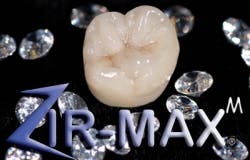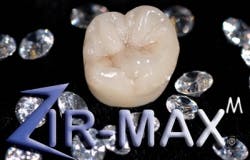The metal-free practice scam
Louis Malcmacher, DDS, MAGD
For more on this topic, go to www.dentaleconomics.com and search using the following key words: metal-free practice, all-ceramic market, zirconia crowns, Dr. Louis Malcmacher.
If you have been to one of my lectures recently, you have heard me ask the audience, “Do you have a metal-free practice?” Many hands shoot into the air and very proudly proclaim that they have a metal-free practice. I immediately ask them if they practice without any metal instruments. They chuckle and realize that they have been fooled. Then they argue that they cannot practice without metal instruments because they are economical and easily autoclavable.
OK, when we talk about a metal-free practice, we’re talking about not using any metals as restoratives in the mouth. Let’s take a look at some of the most recent restorative materials and see how they have replaced metals used in the mouth.
The first thing that dentists in a metal-free practice tell me is that they have eliminated amalgam from their practice. In this day and age, it is pretty clear that amalgam use is significantly decreasing for a number of reasons, including mercury scares, states that require dentists to warn patients about amalgam, or costly amalgam disposal laws.
Let’s turn to composite resins. Those are metal-free, right? Well, it may surprise you to learn that many of the colors in composite resins are made with aluminum oxide, aluminum being a metal.
Dentists will often tell me they have an all-ceramic practice and therefore they are “metal-free.” Let’s take a look at the all-ceramic market and see where we are. First of all, you guessed it; there are many porcelains that use aluminum oxide to make up the different shades of porcelain.
Feldspathic porcelain is a natural mineral that is mined from the earth and refined for dental use. As such, porcelain contains naturally occurring trace elements of lead in varying concentrations, depending on the source and refining process.
In assessing for total lead content, ADA scientists completely dissolved the powders and finished crowns and measured the amount of lead remaining in the solution, finding only trace amounts of the naturally occurring element. The results ranged from below detectable to 113 parts per million (ppm) in the 44 porcelain powders, and an average of 46 ppm in the 102 porcelain dental crowns.
Just because it’s white or tooth colored does not mean that it’s not metal. There is the all-lithium disilicate crowns with no porcelain on top of them. These are made fro one block of lithium disilicate. Guess what, lithium is an alkaline metal according to the Periodic Table of the Elements.
Then there are some of the fastest growing types of crowns in dentistry and those are zirconia crowns. This may be zirconia core with porcelain placed on top of it. This has become a source of frustration for many dentists and dental laboratories because it is a difficult task to lay porcelain on top of a zirconia core without causing breakage.
There are now also full zirconia crowns made from one solid block of zirconia that may very well be one of the strongest restorations in dentistry. Initially, they were not esthetic at all and some were just downright ugly.
Now, with the advent of full zirconia crowns such as Zir-MAX by Burbank Dental Labs and Opalite by Aurum Ceramics Labs, we are getting strength and some beautiful translucency to match some of the all-ceramic crowns.
This is a significant advancement for zirconia crowns. If you have not figured it out by now, according to the Periodic Table of the Elements, zirconia is a transition metal.
My point of all this is that having a metal-free practice is not really the end all and be all of what we should be striving for. What we really need to do is take more comprehensive continuing education that gives us a greater understanding of the dental materials we are using in the mouth, and making sure that they are appropriate for each clinical situation and for each patient. Any dental restorative material is not inherently good or bad — they are just tools for us to use responsibly in patients.
Dr. Louis Malcmacher is a practicing general dentist and internationally known lecturer, author, and dental consultant. An evaluator for CLINICIANS REPORT, Dr. Malcmacher is the president of the American Academy of Facial Esthetics at facialesthetics.org. Contact him at (440) 892-1810 or send an email to [email protected]. His website is www.commonsensedentistry.com, where you can sign up for a free monthly e-newsletter.

